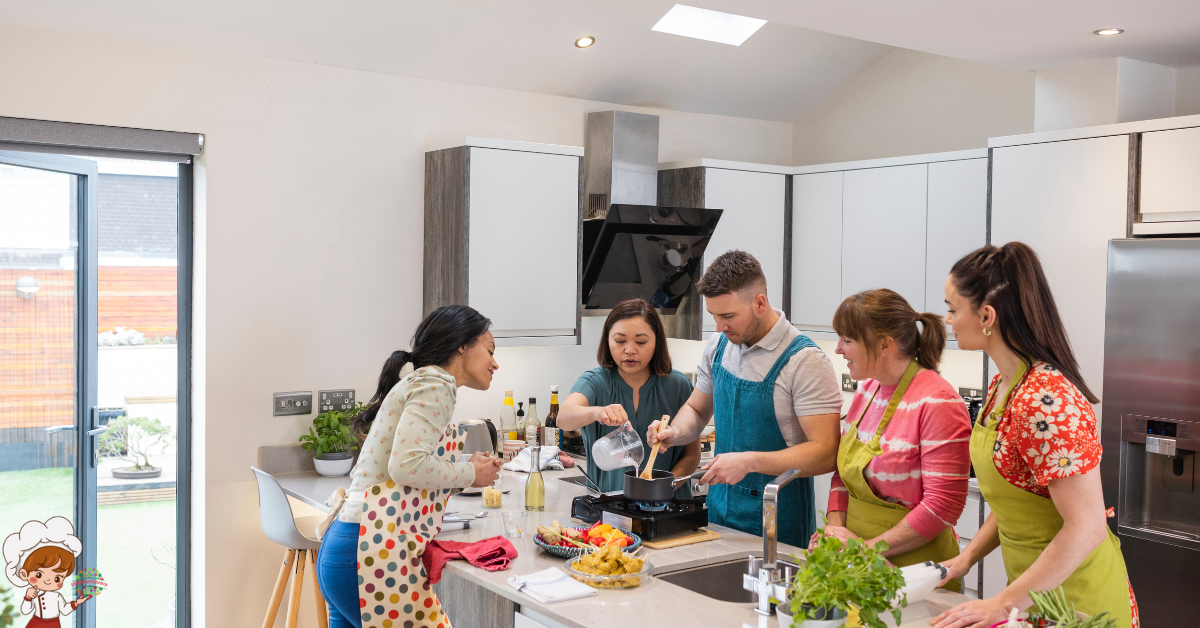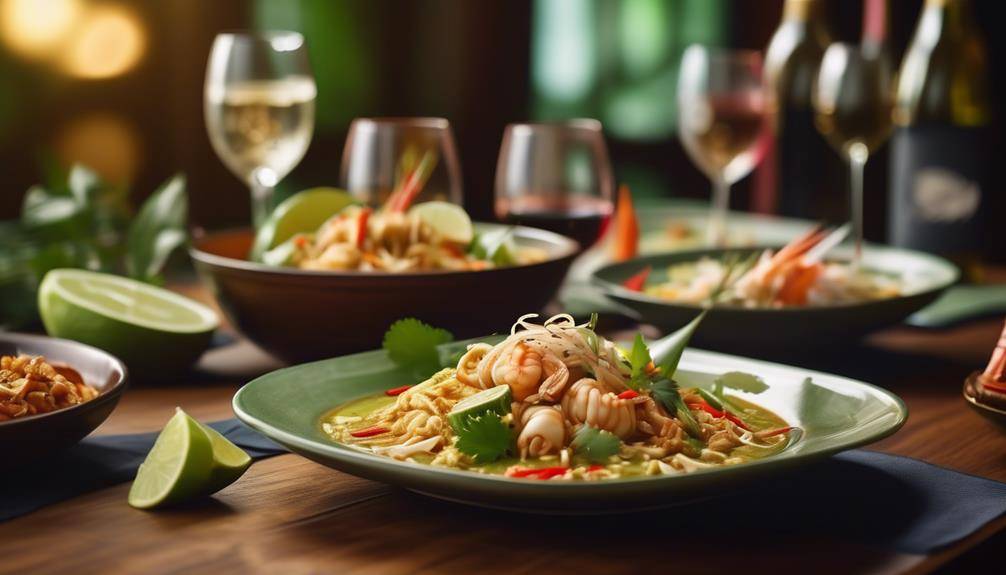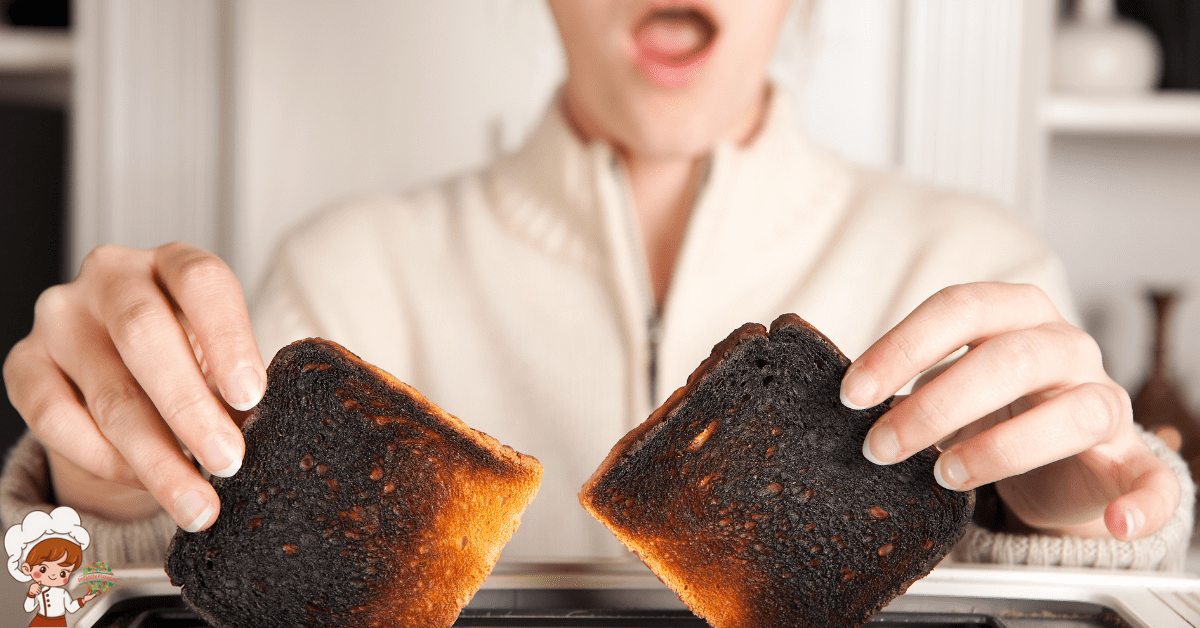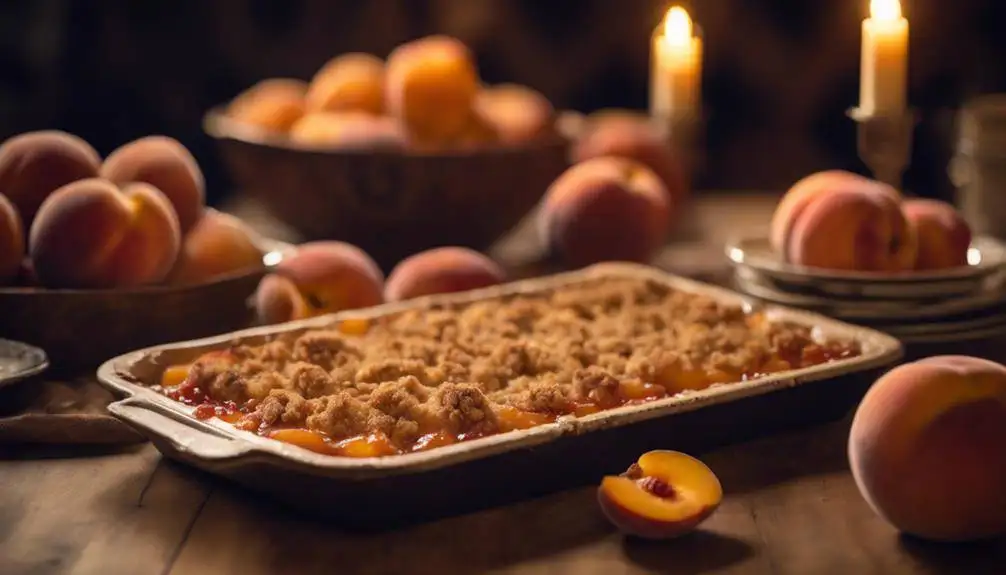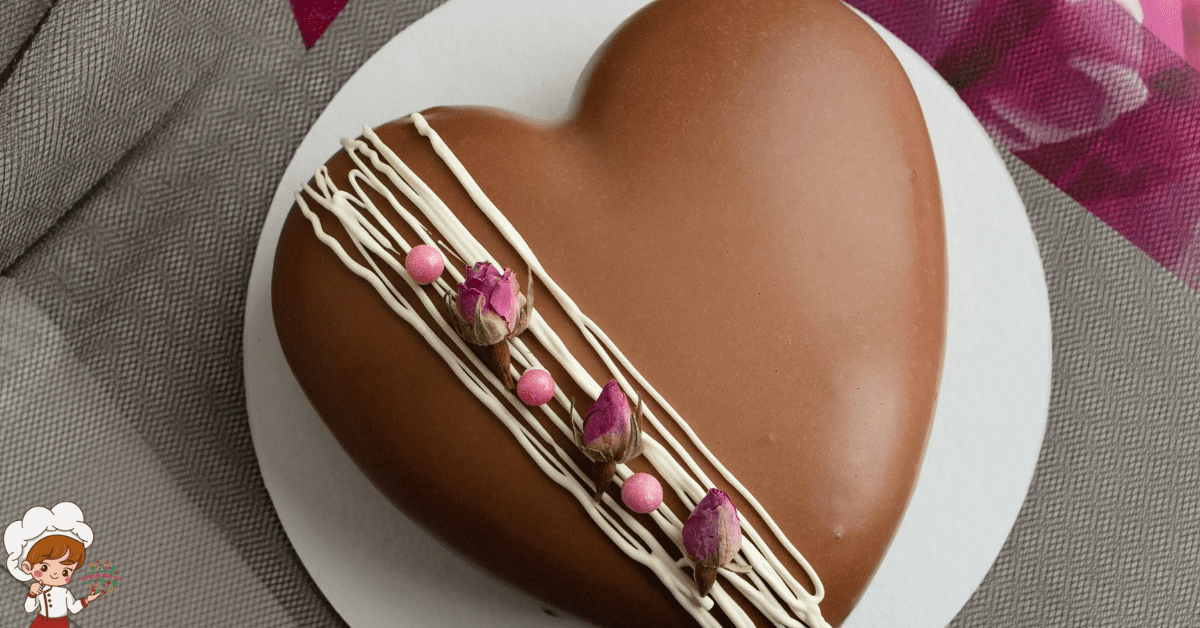Amazing High-Quality Bamboo Cutting Boards Review
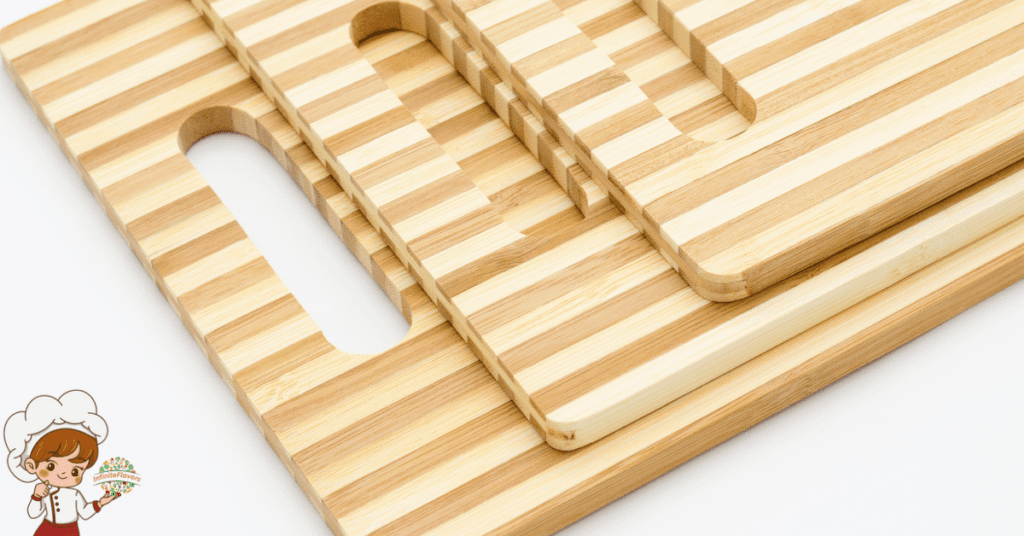
If you’re looking for High-Quality Bamboo Cutting Boards Review, you’ve made a smart choice. They combine durability and sustainability, making them a perfect addition to your kitchen. Bamboo is lightweight and resists deep scratches, keeping a hygienic surface for food prep. You’ll find various sizes and thicknesses to suit meal prep needs. Brands like Totally Bamboo and Bamboozle stand out for their craftsmanship and eco-friendly practices. Plus, customer reviews can guide you to the best options. With all these benefits, you’ll discover why many chefs prefer bamboo boards for their culinary tasks. Let’s explore more features that enhance your cooking experience.
Benefits of Bamboo Cutting Boards
Bamboo cutting boards offer numerous advantages that make them a top choice for any kitchen. One of the standout benefits is bamboo sustainability. Bamboo is a fast-growing grass that can be harvested without killing the plant, allowing it to regenerate quickly. By choosing bamboo, you’re not only getting a durable cutting board, but you’re also making an environmentally friendly choice that supports sustainable practices.
Another major advantage is the cutting board versatility. Bamboo cutting boards can handle a variety of tasks, from chopping vegetables to slicing meats. Their smooth surface is not only gentle on your knives but also easy to clean. You’ll find that bamboo boards resist deep scratches better than traditional wood, which helps maintain a hygienic surface for food preparation.
Moreover, bamboo boards are lightweight and easy to maneuver, making them perfect for any cooking enthusiast. Whether you’re a casual cook or a culinary expert, you’ll appreciate how simple it is to flip and transfer ingredients.
Additionally, bamboo has natural antimicrobial properties, reducing the risk of bacteria buildup compared to other materials. This means you can feel confident that you’re keeping your kitchen safe and clean.
Top Features to Consider
When choosing a bamboo cutting board, you’ll want to focus on material durability and how easy it is to maintain. These features can greatly affect the board’s lifespan and your cooking experience. Let’s explore what to look for to guarantee you make the best choice.
Material Durability
Material durability is essential in choosing a cutting board, as it directly impacts how well the board withstands wear and tear over time. When considering bamboo cutting boards, you’ll want to look into the bamboo hardness comparison. Generally, bamboo boards are made from either Moso or other bamboo species, with Moso being denser and more durable. This means it can resist scratches and dents better, making it an excellent choice for daily use.
Another critical factor is the bamboo grain structure. A tightly woven grain not only enhances durability but also prevents moisture absorption, which can lead to warping or cracking. High-quality bamboo boards often feature a vertical or end grain design, offering superior resilience and longevity.
When you choose a cutting board, think about how often you’ll use it and the types of food you’ll prepare. A more durable board will perform better over time, giving you the reliability you need in the kitchen. Investing in a high-quality bamboo cutting board means you’ll be able to enjoy its benefits for years to come, making it a valuable addition to your culinary tools.
Surface Maintenance Tips
Maintaining the surface of your cutting board is essential for longevity and hygiene, so consider these important tips to keep it in top shape. First, always use the right cutting techniques. Opt for a gentle slicing motion rather than a forceful chop to minimize surface scratches. This not only protects the bamboo but also helps maintain a clean surface.
Next, regularly oil your cutting board with food-safe mineral oil. This creates a protective barrier, preventing moisture from seeping in, which can lead to warping or cracking. Apply oil every month, or more often if you notice the board appears dry.
When cleaning, avoid soaking your board in water or placing it in the dishwasher. Instead, wash it with mild soap and warm water, then dry it immediately. For stubborn stains or odors, a paste of baking soda and water can work wonders without harming the bamboo.
Lastly, store your board in a dry place away from direct sunlight and heat. Following these tips will help you maintain a beautiful, functional cutting surface that lasts for years.
Comparison With Wooden Boards
Bamboo cutting boards offer unique advantages over traditional wooden boards, such as being more resistant to moisture and bacteria. This resistance means you can feel confident using your bamboo board for various food prep tasks without worrying about harmful microbes. Bamboo is not only practical, but it also brings beautiful bamboo aesthetics to your kitchen, adding a touch of elegance and sustainability.
While wooden boards are known for their versatility, bamboo cutting boards provide a great balance between functionality and style. You’ll find that bamboo is lighter and easier to handle, making it a perfect choice for everyday use. Additionally, bamboo’s hardness helps it withstand knife marks better than some softer woods, ensuring a longer lifespan.
However, wooden boards typically offer a wider variety of types and grains, which can enhance your cooking experience. For instance, different woods can impart unique flavors to your food, which bamboo doesn’t do. If you’re an avid chef who enjoys experimenting with various ingredients, you might appreciate the versatility of wooden boards.
Still, if you prioritize hygiene and a modern look, a bamboo cutting board could be the better option for you. It’s durable, eco-friendly, and easier to maintain. Ultimately, the choice between bamboo and wooden boards comes down to your personal preferences and cooking habits. Consider what aspects are most important to you to make the best decision.
Comparison With Plastic Boards
When comparing bamboo cutting boards to plastic ones, it’s crucial to take into account their durability and longevity. You’ll notice that bamboo tends to hold up better over time, while plastic boards can warp or scratch easily. Additionally, the environmental impact of each material plays a significant role in your decision, so let’s explore that further.
Durability and Longevity
Durability plays an essential role in choosing between bamboo and plastic cutting boards, as each material offers distinct advantages and challenges over time. In a bamboo hardness comparison, you’ll find that bamboo is generally harder than most plastic boards, which can lead to better long-term performance. This hardness helps bamboo resist deep scratches and cuts, reducing the likelihood of bacteria harboring in grooves over time.
However, bamboo’s durability does come with some caveats. If you don’t care for it properly—by avoiding soaking and using sufficient oil treatment—you might notice warping or cracking. On the other hand, plastic boards are often easier to clean and maintain. They’re dishwasher-safe and resistant to moisture, but they can develop deep grooves from knife cuts, which can harbor germs, especially as they age.
When weighing your options, consider how often you’ll be using the board and what type of food prep you’ll be doing. If you prioritize a sturdy, long-lasting surface, bamboo might be your best bet. But if convenience and ease of cleaning are at the forefront, a plastic board could serve you well.
Environmental Impact Comparison
Considering the long-term use and care of cutting boards, the environmental impact of bamboo versus plastic is an important factor to keep in mind. Bamboo cutting boards excel in bamboo sustainability, as bamboo is a fast-growing grass that requires minimal resources to thrive. In contrast, plastic boards, often made from petroleum products, have a much higher carbon footprint due to the fossil fuels used in their production and disposal.
When you choose a bamboo board, you’re opting for a renewable resource that can be harvested without harming the ecosystem. Bamboo absorbs more carbon dioxide than trees, making it a great choice for reducing greenhouse gases. On the other hand, plastic boards contribute to landfill waste and can take hundreds of years to decompose, leaching harmful chemicals in the process.
If you care about the planet, switching to bamboo not only gives you a durable kitchen tool but also supports environmental health. You’ll appreciate the peace of mind that comes with knowing your cutting board choice aligns with sustainable practices. By making this small change in the kitchen, you can help lower your carbon footprint and promote a greener lifestyle.
Eco-Friendly Aspects of Bamboo
Bamboo stands out as an eco-friendly choice for cutting boards due to its rapid growth and sustainable harvesting practices. Unlike traditional hardwoods, bamboo can reach maturity in just three to five years, making it a renewable resource that won’t deplete forests. When you choose bamboo, you’re supporting sustainability practices that prioritize the environment.
Bamboo sourcing is key to its eco-friendliness. Most bamboo used in cutting boards is sourced from well-managed farms that adhere to strict environmental standards. This means that the bamboo is grown without harmful pesticides or fertilizers, preserving the surrounding ecosystem. By opting for bamboo, you’re not just getting a functional kitchen tool; you’re also making a responsible choice that minimizes your carbon footprint.
Moreover, bamboo’s natural properties enhance its sustainability. It’s biodegradable, so when it reaches the end of its life, it won’t contribute to landfill waste like plastic or synthetic materials. Instead, it will naturally decompose, returning nutrients to the soil.
Choosing a bamboo cutting board also means you’re investing in a product that’s durable and long-lasting. With proper care, these boards resist moisture and bacteria, making them not only a greener option but also a safe one for food preparation.
Care and Maintenance Tips
To keep your bamboo cutting board in top shape, you need to focus on proper cleaning, regular oiling, and smart storage. Knowing how to maintain your board will extend its life and enhance its beauty. Let’s break down the essential care tips you should follow.
Cleaning Techniques Explained
Keeping your bamboo cutting board in top shape requires regular cleaning and proper maintenance techniques. To guarantee your board remains hygienic, employ effective cleaning methods right after use. Start by scraping off any food particles with a spatula or cloth, then rinse it under warm water. Avoid soaking it, as excess moisture can warp the wood.
For deeper sanitation practices, use a mild dish soap and a soft sponge to scrub the surface. This will help eliminate bacteria without harming the bamboo. For stubborn stains or odors, you can sprinkle baking soda on the board and scrub with a damp cloth. Rinse thoroughly afterward.
It’s essential to avoid harsh chemicals or abrasive scrubbers, as they can damage the board’s finish. After cleaning, pat the board dry with a towel to remove excess moisture. Let it air dry completely before storing it upright.
Regularly cleaning your bamboo cutting board not only maintains its appearance but also prolongs its lifespan, making it a reliable kitchen companion for years to come.
Oiling Frequency Recommendations
Regularly oiling your cutting board helps maintain its natural luster and prevents cracking or warping over time. You should aim to oil your bamboo cutting board every month, or more frequently if you notice it looking dry. For the best results, use food-safe mineral oil or a specialized cutting board oil, as these oil types penetrate well and don’t go rancid.
When applying oil, you can use a clean, soft cloth or paper towel. Start with a small amount, spreading it evenly across the surface using circular motions. Allow the oil to soak in for at least a few hours, or overnight if possible. For additional protection, you can also explore oiling techniques like the “flood method,” where you apply a generous amount of oil and let it sit for a few hours before wiping off the excess.
Storage Best Practices
Storing your bamboo cutting board properly can extend its lifespan and maintain its quality. To guarantee effective cutting board storage, keep it in a cool, dry place away from direct sunlight. Excessive heat or moisture can warp or crack the board, compromising its integrity.
For the best kitchen organization, consider using a dedicated spot in your kitchen cabinet or drawer. If you have limited space, you can hang the board on a wall using hooks or a magnetic strip, which not only saves space but also showcases its beauty.
Always make sure the board is completely dry before storing it to prevent mold growth. If you stack multiple boards, place a towel or paper between them to absorb moisture and prevent scratches. Avoid storing your cutting board in a way that puts pressure on it, as this can lead to warping over time.
Size and Thickness Options
When choosing a bamboo cutting board, consider the size and thickness that best fit your kitchen needs and cooking habits. The right cutting board dimensions can make a significant difference in your meal prep experience. If you often chop large quantities of ingredients, a larger board—typically around 18 x 24 inches—might be ideal. On the other hand, if you’re working with limited counter space or primarily preparing small meals, a smaller board in the range of 12 x 18 inches could serve you well.
Thickness variations are also an essential factor. Thicker boards, around 1.5 inches, offer increased durability and stability, making them suitable for heavy-duty tasks like chopping meat. They tend to resist warping and dents better over time. Conversely, thinner boards, usually around 0.5 to 1 inch thick, are lighter and easier to handle, which can be beneficial if you need to transfer ingredients frequently.
Keep in mind that a board that’s too small can limit your workspace, while one that’s too large might become cumbersome to store or clean. Think about your specific cooking style and the types of foods you prepare most often. By carefully evaluating your cutting board dimensions and thickness variations, you’ll find the perfect bamboo cutting board that enhances your kitchen efficiency and enjoyment.
Best Brands to Look For
Finding the right brand of bamboo cutting board can elevate your cooking experience and guarantee you get a durable, high-quality product. When you’re shopping, it’s important to take into account brands that have established a solid reputation in the market. Brands like Totally Bamboo and Bamboozle are known for their exceptional quality and craftsmanship. These companies prioritize using sustainably sourced bamboo, which not only benefits the environment but also guarantees durability.
Another vital aspect to look for is customer service. A brand that stands behind its products and values customer satisfaction will make your buying experience smooth and enjoyable. For instance, brands like OXO often receive high marks for their responsive customer service, making it easy for you to get help or resolve any issues that may arise.
You should also check for warranties or satisfaction guarantees offered by these brands. This can provide peace of mind, knowing that if something goes wrong, you have support. Look for brands that actively engage with their customers and address concerns promptly; this often reflects their commitment to quality and service.
Ultimately, investing in a bamboo cutting board from a reputable brand with excellent customer service will not only enhance your kitchen experience but also guarantee you have a reliable tool that lasts for years to come.
Customer Reviews and Ratings
Customer reviews and ratings play a significant role in helping you choose the right bamboo cutting board, as they provide real-life insights into product performance and user satisfaction. When you read through these reviews, you’ll often find detailed customer experiences that highlight both the pros and cons of each product. This information can be invaluable, especially when you’re trying to determine which board will best meet your needs.
Many users rave about the durability of bamboo cutting boards, noting how they withstand heavy use without warping or cracking. You might also come across comments about the boards’ natural antibacterial properties, which can enhance food safety in your kitchen. However, some customers mention that certain boards can be prone to scratches, so it’s important to pay attention to those experiences to find a board that balances durability with ease of maintenance.
Another aspect to take into account is the size and design of the cutting boards. Several reviewers share their satisfaction with specific dimensions that fit perfectly in their kitchens, making food prep more enjoyable. On the flip side, some customers express disappointment when a board didn’t meet their expectations regarding size or functionality.
Price Range Overview
Bamboo cutting boards come in a wide price range, allowing you to find options that fit your budget without sacrificing quality. You’ll notice that prices typically range from around $15 for basic models to upwards of $100 for larger, premium boards. Understanding your budget considerations is essential, as it helps you narrow down your choices effectively.
When evaluating value, consider the features that matter most to you. For instance, if you’re looking for a board that withstands heavy use, investing in a higher-priced, thicker, and more durable option might be wise. On the other hand, if you need a cutting board for occasional use, you can find reliable, budget-friendly options that still deliver good performance.
Don’t forget to factor in size and design. Larger boards tend to cost more, but they also offer more space for prepping meals. Some models include additional features like juice grooves or built-in handles, which can enhance usability and justify a higher price tag.
Ultimately, a thoughtful value evaluation will help you determine what you’re willing to spend. Look for boards that balance quality and price, ensuring you get the best bang for your buck. By taking the time to assess your needs and compare different options, you’ll find a bamboo cutting board that meets your requirements without breaking the bank.
Recommendations for Specific Uses
When choosing a bamboo cutting board, consider how you’ll use it, as different tasks call for specific features and sizes. If you’re focused on meal prep, opt for a larger board with ample surface area. A board measuring at least 18×12 inches gives you enough space for chopping vegetables, slicing meats, or even rolling out dough. Look for a thicker board to withstand vigorous chopping techniques without warping or cracking.
For those who frequently work with delicate ingredients like herbs or fruits, choose a board with a smooth surface. This will help prevent sticking and make it easier to use your knife without resistance. A reversible board can also be beneficial, allowing you to designate one side for fruits and the other for meats, reducing cross-contamination.
If you’re a fan of charcuterie boards or entertaining guests, consider a bamboo board with integrated juice grooves. These grooves catch excess liquids, keeping your prep area clean while you slice cheeses and cured meats.
Lastly, for quick tasks or small portions, a smaller, lightweight board is ideal. It’s easy to handle and store, making it perfect for quick slicing or dicing. Remember, choosing the right bamboo cutting board tailored to your specific needs will enhance your cooking experience and guarantee that meal prep is both efficient and enjoyable.
Frequently Asked Questions: High-Quality Bamboo Cutting Boards Review
Are Bamboo Cutting Boards Safe for Raw Meat Preparation?
Bamboo cutting boards are generally safe for raw meat preparation, but you should be cautious of meat cross contamination. Their durability helps, but guarantee you clean them thoroughly to maintain food safety standards effectively.
How Long Do Bamboo Cutting Boards Typically Last?
Bamboo cutting boards typically last several years, depending on durability factors like quality and usage. To extend their lifespan, follow maintenance tips such as regular oiling and avoiding soaking to prevent warping and cracking.
Can Bamboo Cutting Boards Be Used in the Dishwasher?
Bamboo cutting boards aren’t dishwasher safe, so avoid tossing them in. Instead, wash them by hand with mild soap and water for best results. Follow these cleaning tips to maintain their longevity and appearance.
Do Bamboo Cutting Boards Have a Distinct Smell?
Bamboo cutting boards can have a distinct smell, especially when new. To tackle bamboo odor removal, wash it with vinegar or baking soda. Regular bamboo cutting board care helps minimize any lingering odors over time.
Are There Any Allergens Associated With Bamboo Cutting Boards?
You won’t typically find allergens associated with bamboo cutting boards, as bamboo allergies are rare. Additionally, bamboo toxicity isn’t a concern, making these boards a safe choice for most people in your kitchen.
Conclusion
To sum up, bamboo cutting boards offer a fantastic blend of durability, eco-friendliness, and functionality. By considering the top features and comparing them with wooden and plastic options, you can find the perfect board for your kitchen needs. With trusted brands and solid customer reviews, investing in a bamboo cutting board is a smart choice. Whether you’re chopping veggies or preparing meat, you’ll enjoy the benefits they bring to your cooking experience. Happy chopping!




